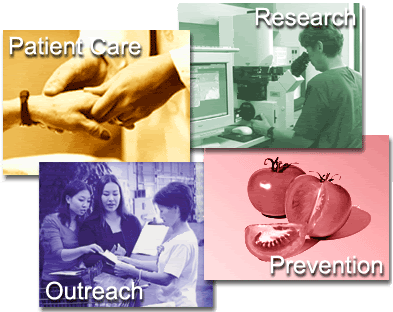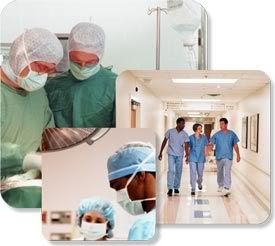Intestinal Low-grade Tubuloglandular Adenocarcinoma in Inflammatory Bowel Disease.
Patients with long-standing idiopathic colorectal inflammatory bowel disease (IBD) face a formidable risk of developing colorectal adenocarcinoma. According to a recent meta-analysis, the cumulative risk among patients with ulcerative colitis (UC) of 30-years' duration is estimated to be 18%. Other studies suggest similarly high cancer rates among patients with Crohn colitis (CC) of comparable duration and extent. Established or suspected risk factors for IBD-associated cancer include extensive colonic involvement, disease duration of at least 8 years, early disease onset, concurrent primary sclerosing cholangitis, and colorectal cancer in first-degree relatives.
Except for higher frequencies of mucinous and signet ring adenocarcinomas, the morphology of colorectal cancer complicating IBD is not dissimilar to that of cancer in the general population. Unlike sporadic cancer, however, cancer in IBD tends to be poorly delimited and multifocal. In addition, it typically arises within poorly circumscribed regions of flat or polypoid dysplasia surrounded by chronically inflamed mucosa rather than in individual discrete adenomatous polyps surrounded by normal mucosa. As a result, the diagnosis and management of neoplasia in patients with IBD present unique challenges to clinicians and pathologists.
DISCUSSION
Low-grade tubuloglandular adenocarcinoma (LGTGA) is evidently not a rare entity, occurring in 11% of patients operated for IBD-related lower gastrointestinal tract cancers at our institution during the study period. Although histologically distinctive, it shares many of the clinical and pathologic features of IBD-related colorectal cancers in general. The patients were relatively young (mean age 41.5 y, range 28 to 58 y) and had long-standing, extensive colitis. Although most had UC, nearly one-fourth had CC, reflecting the heightened cancer risk faced by patients with Crohn disease with colonic involvement. The diverse macroscopic presentations of LGTGA, including stenosing, exophytic, villiform, plaquelike and flat, and their multiplicity, with one-third of specimens containing multiple synchronous cancers, were typical of IBD-associated neoplasia.
The subgroup of flat cancers was of particular interest, as these lesions escaped visual detection not only during the initial gross examination but also on reexamination after a microscopic diagnosis had been made. The occurrence of cancers without any macroscopic component in resections for IBD has been noted previously, for example, by Butt et al. Besides the flatness of the overlying mucosa, factors contributing to the inconspicuousness of these cases included their relatively small size, which did not exceed 2.2 cm, and a minimal desmoplastic reaction. Although such flat tumors may be apt to escape detection even under conditions of endoscopic examination, we were unable to carry out detailed gross-endoscopic correlations in this retrospective study.
LGTGA, was surrounded by flat or polypoid LGD. Histologically, the invasive glands were very similar cytologically to the overlying dysplastic crypts and elicited little or no desmoplastic reaction, thus resembling benign extensions of the crypts themselves. As a result, the distinction of invasive glands from dysplastic crypts was obvious at low magnifications but not so at high magnifications. This discordance was particularly compelling in 1 case of remarkably low-grade “minimal deviation” LGTGA that arose from crypts that failed to reach the histologic threshold of LGD. From a practical standpoint, the close resemblance of LGTGA to dysplastic crypts poses a potential pitfall leading to underdiagnosis of cancer in endoscopic biopsies.
Approximately half of the tumors in our series progressed histologically to conventional well-differentiated mucinous or poorly differentiated adenocarcinomas. As a group, these tumors were significantly more advanced than tumors that maintained low-grade histology throughout and accounted for the only known mortality in the series, excluding adverse outcomes attributable to separate synchronous conventional cancers. These findings suggest that the emergence of conventional adenocarcinoma from LGTGA is commonplace and signifies biologic progression to a more aggressive form of malignancy. It is notable that 3 of 5 flat cancers in our series underwent histologic progression and accounted for adverse clinical outcomes, indicating that the lack of a macroscopic lesion is not necessarily a favorable tumor characteristic.
The prevalence of silencing of hMLH1, 55% of cases tested, substantially exceeds the roughly 15% prevalence reported for sporadic colorectal cancers and for unselected cancers complicating IBD and suggests that defective DNA replication error repair as seen in microsatellite unstable cancers plays an unusually prominent role in the pathogenesis of LGTGA.
Furthermore, these data may be an underestimate as multiple studies have reported the sensitivity and specificity of hMLH1 immunohistochemistry for microsatellite instability in non-HNPCC colorectal cancers to be approximately 79% and 100%, respectively, compared with direct DNA analysis. Histologically, the high proportion of cases with silencing of hMLH1 correlates with the paucity of dirty tumor necrosis and the frequent presence of secretory mucin in LGTGA; however, other histologic correlates of microsatellite unstable carcinomas, such as intratumoral lymphocytosis and a Crohn-like inflammatory reaction, were absent.
The immunohistochemical profile of mucin expression (72% positive for MUC2, 0% for MUC6) was similar to that of unselected conventional colorectal adenocarcinomas. An unusually high proportion of cases (69%) coexpressed CK7 and CK20. This profile is relatively common in cancers of the upper gastrointestinal tract, but the absence of MUC6 expression in our cases distinguishes LGTGA from gastric and small intestinal adenocarcinomas. Interestingly, CK7 expression was conserved in regions of conventional adenocarcinoma to which CK7+ cases of LGTGA had progressed. It remains to be determined whether a high frequency of CK7 expression is unique to LGTGA or a characteristic of IBD-associated cancers in general. It is also noteworthy that 100% of cases were strongly positive for CK20 despite the high proportion of tumors showing silencing of hMLH1, as a study of conventional colorectal cancers has recently noted a reciprocal relationship between CK20 reactivity and high-level microsatellite instability.
Recognition of LGTGA as a clinicopathologic entity has implications for the clinical management of IBD patients at risk for cancer and for our understanding of cancer pathogenesis in IBD. Currently, the prevailing approach to cancer prevention among high-risk patients is enrollment in colonoscopic surveillance programs to enable early detection of neoplasia and surgical intervention where appropriate. Most authorities agree that the detection of high-grade dysplasia in biopsies carries sufficient risk of synchronous carcinoma (40–50%) to warrant prompt colectomy. and that the diagnosis of a visible dysplastic lesion or DALM has similar implications regardless of whether the dysplasia in endoscopic biopsies is low or high grade.
However, the optimal management of IBD patients with biopsies revealing LGD without a corresponding visible mass, that is, flat LGD, has been more controversial. On one hand, LGD is regarded as an intermediate stage in the pathogenesis of IBD-associated cancer, the development of cancer depending on further progression from LGD to HGD. This conventional view provides a conceptual justification for expectant management of patients diagnosed with LGD, as failure to undergo further progression implies some degree of safety. On the other hand, the benefits of avoiding immediate surgery must be weighed against the risks of missing synchronous carcinoma and against the likelihood of short-term progression to more advanced neoplasia. A meta-analysis of surveillance programs by Bernstein et al found the frequency of cancer among patients who underwent immediate colectomy based on a diagnosis of LGD (both flat and polypoid) to be 19%. Similarly, a recent cohort study from our institution reported cancer in approximately 14% of patients with flat LGD who underwent colectomy within 6 months of diagnosis.
In addition, we reported the predictive value of flat LGD for progression to cancer or HGD within 5 years to be approximately 50%, a value in agreement with several other studies, and that the risk was similarly high whether surveillance biopsies yielded unifocal or multifocal LGD. However, conclusions based on these data need to be tempered by lower rates of progression reported in other studies and by the problem of poor interobserver agreement among pathologists in diagnosing and grading dysplasia, especially LGD, which raise legitimate concerns for the performance of unnecessary prophylactic colectomies.
Our observation that LGD, and even indefinite dysplasia, can undergo malignant transformation directly to LGTGA, and by way of LGTGA to more aggressive forms of cancer, highlights the limited sensitivity and reliability of conventional histology to accurately predict the neoplastic behavior of abnormal mucosa in IBD and the need for more sophisticated markers for cancer surveillance and risk stratification. From the standpoint of current clinical practice, it reinforces an aggressive approach to the management of patients diagnosed endoscopically with LGD, although with appropriate measures taken to assure the accuracy of the diagnosis.
In summary, this study describes the clinicopathologic characteristics of LGTGA, a distinct entity encountered in patients with chronic IBD characterized by very low-grade histology, potential progression to more conventional and aggressive forms of carcinoma, derivation from LGD, frequent coexpression of CK7 and CK20, and frequent silencing of hMLH1. Awareness of this entity is important not only for pathologists but for clinicians involved in the management of patients with IBD who are at risk for developing colorectal neoplasia.




0 Comments:
Post a Comment
<< Home